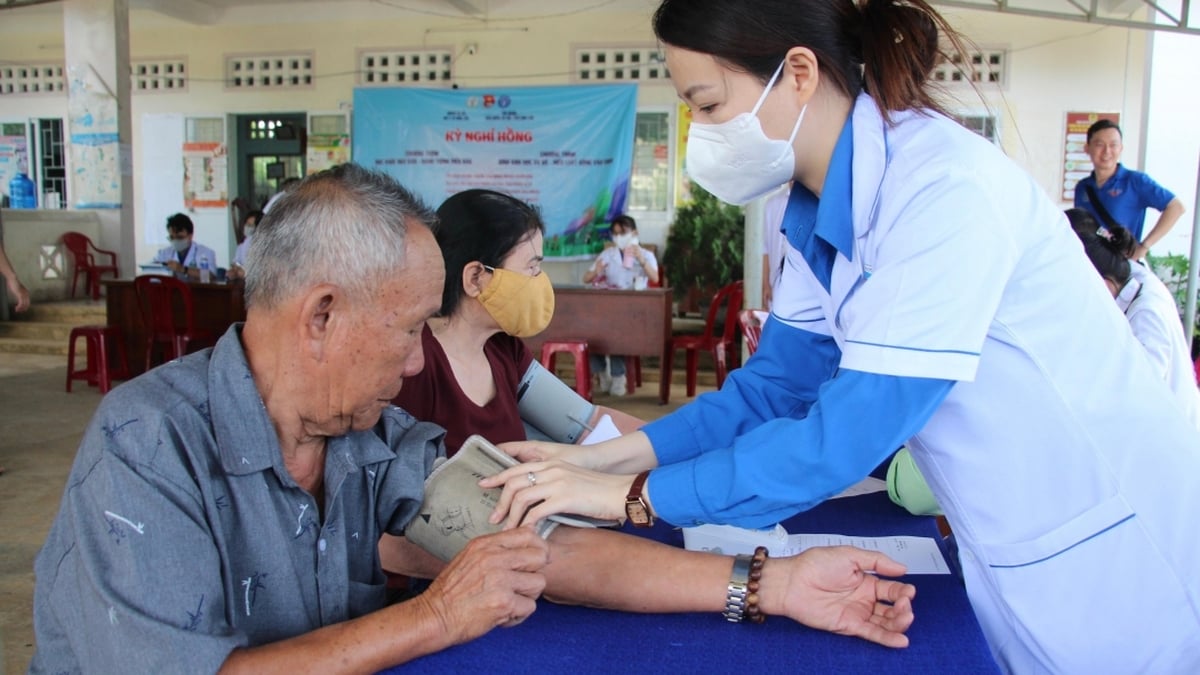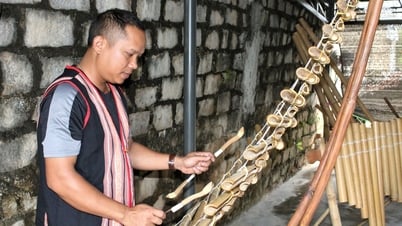Pain in the finger joints or abnormally deformed fingers… are warning signs of arthritis in the fingers, which need to be examined and treated early.
Finger arthritis is a condition in which the cartilage at the ends of the bones that form the finger joints wears away or degenerates, occurring slowly over many years. This condition can occur in any finger, such as the thumb joint, little finger joint...
Master, Doctor, Doctor Tran Thi Thanh Tu, Orthopedic Trauma Center, Tam Anh General Hospital System, said that whether finger joint pain and swelling are dangerous or not will depend on the cause and the current severity of the disease. Regardless of the cause of finger arthritis, if not treated promptly, it will lead to dangerous complications for the hand such as: temporary loss of motor function, stiff joints, muscle atrophy and joint deformity. Therefore, early detection of disease signs plays an important role in the treatment process.

Finger arthritis causes stiffness, pain and difficulty moving. Photo: Freepik
Some warning signs of finger arthritis include:
Finger joint pain
This is the first and most common symptom. Pain may appear at the base of the finger when holding, grabbing an object or using force with the fingers. The pain only appears when the patient holds or grasps an object. When active, the pain will decrease. After a few minutes of rest, the stiffness and pain will increase. In the long term, when the inflammation is more severe, pain in the finger joints may appear even when the patient is resting.
Finger deformity
As the disease progresses, not only does the pain increase, but the patient’s fingers also tend to become deformed. The finger joints begin to bend toward the little finger. This is a deviation toward the ulnar bone, causing pain and weakness in the hand. The patient has difficulty using the hand in daily activities.
Interphalangeal joint deformity
This is a condition in which the interphalangeal joints of the fingers are excessively flexed or extended, resulting in a deformity. There are two types of interphalangeal joint deformities: swan neck deformity and boutonniere deformity. Swan neck deformity occurs when the proximal interphalangeal joints of the hand are loose and overextended, while the distal interphalangeal joints of the hand are flexed. Meanwhile, boutonniere deformity is the opposite condition, the proximal interphalangeal joints are flexed and the distal interphalangeal joints are extended.
In addition, inflamed finger joints may also have other symptoms such as swelling, stiffness, warmth, pain at the base of the finger, reduced grip strength, reduced range of motion, enlarged joints at the base of the finger, or visible bone lumps.

Doctor Thanh Tu gives health advice to people with bone and joint diseases. Photo : Tam Anh General Hospital
Doctor Thanh Tu shared that in the early stages, finger arthritis is treated with conservative methods such as:
Medication : If the finger joints only hurt when working a lot or doing heavy work, the doctor will prescribe pain relievers and anti-inflammatory drugs. To better control symptoms, the patient needs to limit heavy activities and stop doing jobs that require repetitive movements of the hands and fingers.
Platelet-rich plasma injection : This injection stimulates epithelial cells, creates matrix, divides cells, regenerates blood cells, stimulates blood vessel growth, thereby supporting the regeneration of damaged tissues, making cells healthier. With musculoskeletal injuries, platelet-rich plasma helps reduce inflammation, quickly stops pain, and improves mobility for muscles and joints.
Physical therapy : The goal of these exercises is to help control symptoms and maintain stability in the hands and joints. Range of motion and stretching exercises will help improve finger mobility. Hand and arm strengthening exercises help stabilize the hand and protect the fingers from shock or pressure.
Finger splint or elastic bandage : This method helps relieve pain, position the joint correctly, prevent joint deformation, and help the joint rest. Patients can wear the splint at night or wear it all day if it does not interfere with work or daily activities.
Surgery : When finger arthritis becomes severe and medical treatment is ineffective, surgery will be indicated. Common surgical methods used to treat finger arthritis include bone fusion and artificial joint replacement.
Phi Hong
Source link



































































































Comment (0)